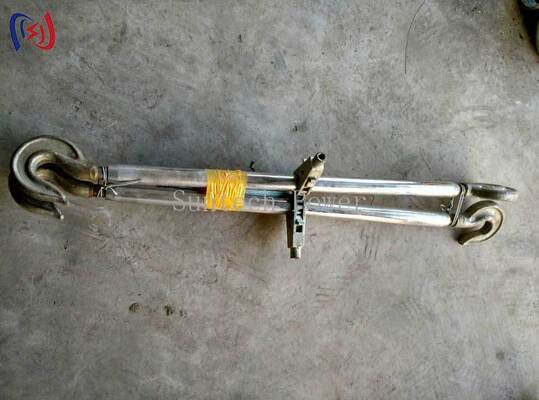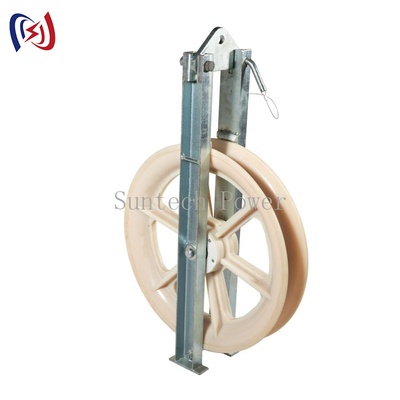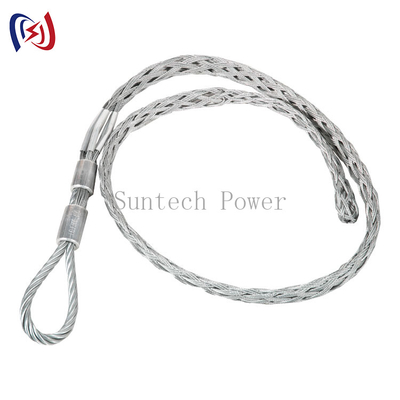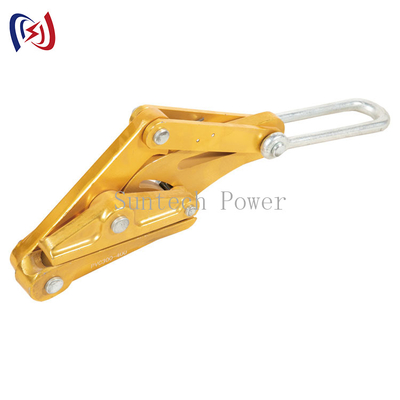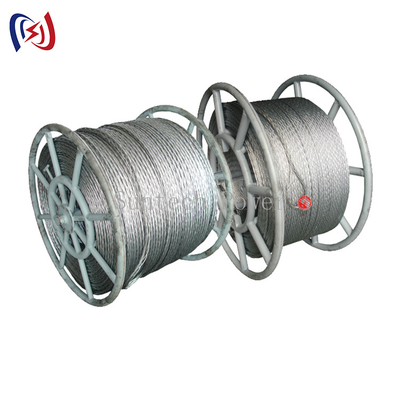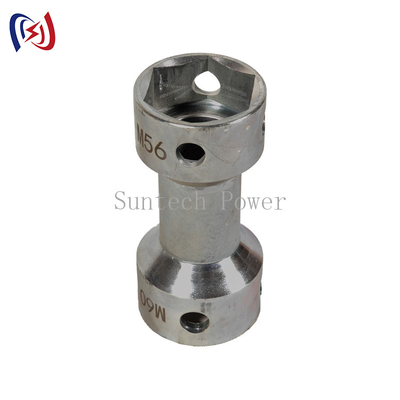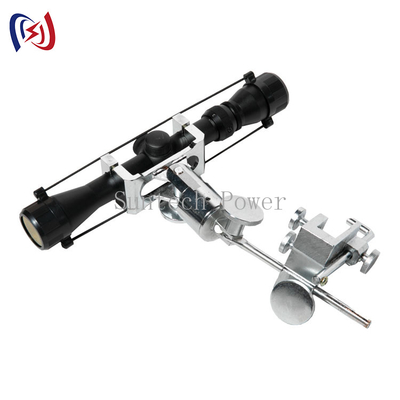Trong môi trường rủi ro cao của việc xây dựng và bảo trì đường dây điện trên không, an toàn và độ chính xác là không thể thương lượng.Trong khi trọng tâm chính thường là lắp đặt vật lý của các dây dẫn, một mối đe dọa vô hình và mạnh mẽ vẫn tồn tại: mối nguy hiểm của điện áp và điện tĩnh.là các thiết bị an toàn quan trọng được thiết kế đặc biệt để vô hiệu hóa mối nguy ẩn này, bảo vệ cả nhân viên và thiết bị trong các hoạt động dây căng thẳng.
Đối với các công ty tiện ích, nhà thầu và nhân viên đường dây làm việc trên các dự án truyền và phân phối trên khắp Trung Á, Trung Đông, Châu Phi, Nam Mỹ và Đông Nam Á,nơi các dự án thường trải dài khoảng cách rất xa và địa hình đa dạngHướng dẫn này cung cấp một cái nhìn tổng quan toàn diện và khách quan về các khối nối đất, giải thích chức năng quan trọng của chúng, lợi ích chính,và các yếu tố quan trọng cần xem xét trong quá trình mua sắm.
Để khám phá đầy đủ các khối nối đất bền và đáng tin cậy được thiết kế cho các điều kiện đòi hỏi khắt khe nhất, chúng tôi mời bạn truy cập trang chủ sản phẩm của chúng tôi để xem các thông số kỹ thuật và tùy chọn chi tiết.
Hiểu được mối đe dọa vô hình: điện áp gây ra và điện tích tĩnh
Trong quá trình nối dây điện áp, có hai mối nguy hiểm điện chính, ngay cả trên các đường dây không điện:
-
Điện áp gây ra: Khi một dây dẫn mới được nối song song với các đường dây điện hiện có, các trường điện từ từ các đường dây năng lượng có thể "khuyến khích" một điện áp nguy hiểm vào đường dây mới,dây dẫn không năng lượngĐiện áp này có thể đủ mạnh để gây ra điện giật.
-
Điện tĩnh: Khi một dây dẫn được kéo qua không khí, đặc biệt là trong điều kiện khô, gió hoặc bụi (thường xảy ra ở nhiều khu vực mục tiêu),ma sát có thể gây ra sự tích tụ đáng kể điện tĩnh trên dây dẫnLoại đạn này có thể rơi xuống mặt đất hoặc vào người, gây ra một cú sốc đau đớn và nguy hiểm.
Một khối nối đất là giải pháp kỹ thuật cho những vấn đề này, cung cấp một con đường an toàn và được kiểm soát để điện không mong muốn này phân tán vô hại xuống đất.
Làm thế nào một khối đất hoạt động: Nguyên tắc phân tán an toàn
Một khối nối đất không phải là một cái kẹp đơn giản. Nó là một thiết bị được xây dựng đặc biệt để tích hợp vào hệ thống nối dây. Hoạt động của nó là có phương pháp và rất quan trọng:
-
Tích hợp: Khối nối đất được lắp đặt trực tiếp trên dây dẫn trong quá trình nối dây.thường được gắn vào một điểm neo tĩnh hoặc một dolly di chuyển trên máy căng.
-
Kết nối: Một cáp nối đất linh hoạt, có khả năng sử dụng nặng được gắn chặt vào một đầu cuối chuyên dụng trên khối.
-
Con đường đến Trái đất: Đầu kia của dây cáp này được kết nối với một thanh nối đất được lắp đặt đúng cách được đẩy sâu vào đất, tạo ra một con đường kháng cự thấp đến mặt đất.
-
Bảo vệ liên tục: Khi dây dẫn di chuyển qua khối trong quá trình dây, khối duy trì tiếp xúc điện liên tục.Bất kỳ điện áp gây ra hoặc điện tích tĩnh tích tụ trên dây dẫn ngay lập tức được chuyển hướng qua khối và xuống cáp vào mặt đất, vô hiệu hóa nguy cơ trong thời gian thực.
Nó hoạt động như một van an toàn cho điện, đảm bảo dây dẫn vẫn ở mức tiềm năng đất (0 volt) trong suốt toàn bộ hoạt động.
Các ứng dụng chính trong lĩnh vực
Các khối đất là điều không thể thiếu cho:
-
Xây dựng đường truyền mới: Khi nối dây dẫn gần các đường truyền hiện có.
-
Các dự án tái dẫn điện: Thay thế các dây dẫn cũ trên các hành lang năng lượng.
-
Cải tiến đường dây phân phối: Làm việc trong các khu vực đông đúc với nhiều mạch hiện có.
-
Bảo trì và sửa chữa: Bất cứ khi nào một dây dẫn được xử lý trong một môi trường có khả năng nguy hiểm về mặt điện.
Việc sử dụng chúng là một thực tiễn tốt nhất cơ bản và thường là một yêu cầu bắt buộc theo các quy tắc an toàn tiện ích (ví dụ: OSHA, tiêu chuẩn IEC).
Hướng dẫn của người mua: Các yếu tố quan trọng để chọn đúng khối đất
Đối với các nhà quản lý an toàn và người đứng đầu, đây là những yếu tố kỹ thuật và thực tế thiết yếu cần xem xét.
1. Khả năng mang dòng (kA xếp hạng):
Đây là thông số kỹ thuật quan trọng nhất. Nó xác định lượng dòng lỗi mà khối có thể xử lý một cách an toàn trong một thời gian cụ thể (ví dụ: 20 kA trong 1 giây).Đánh giá phải đủ cho các điện áp tiềm năng gây ra và dòng lỗi trong môi trường làm việc cụ thể của bạn- Luôn luôn sai ở phía xếp hạng cao hơn.
2. Khả năng tương thích với dây dẫn và thiết kế hàm:
-
Phạm vi đường kính: Khối phải được thiết kế cho đường kính cụ thể của các dây dẫn của bạn (ví dụ: ACSR, AAAC).
-
Vật liệu hàm: hàm thường được làm từ hợp kim đồng đồng hoặc beryllium đồng, cung cấp độ dẫn xuất sắc và có khả năng chống hư hỏng bằng cung.
-
Cơ chế áp lực: Các hàm phải cung cấp áp lực vững chắc, nhất quán lên dây dẫn thông qua một lò xo mạnh mẽ hoặc một cơ chế cuộn dây để đảm bảo kết nối kháng cự thấp,ngay cả khi dây dẫn rung động hoặc di chuyển.
3. Cáp nối đất và kết nối:
-
Kích thước cáp: Khối phải có đầu cuối tương thích với cáp nối đất có đường kính lớn, linh hoạt (ví dụ: 4/0 AWG hoặc lớn hơn).Cáp là một phần quan trọng của hệ thống và phải có mức điện cao của riêng mình.
-
Kết nối đầu cuối: Đầu cuối phải cung cấp một điểm kết nối an toàn, kháng cự thấp cho ống cáp, thường thông qua một cọc bằng đồng hoặc thép không gỉ để ngăn ngừa ăn mòn.
4. Xây dựng và độ bền:
-
Sức mạnh khung: Cơ thể chính phải được xây dựng từ vật liệu không ăn mòn, có độ bền cao như nhôm hoặc thép không gỉ để chịu được sự cứng rắn của công trình.
-
Chống ăn mòn: Với môi trường ngoài trời, thường khắc nghiệt, vật liệu và kết thúc phải chống ăn mòn do mưa, phun muối (vùng ven biển) và độ ẩm.
-
Chống tia cực tím: Các thành phần không nên bị phân hủy khi tiếp xúc với ánh sáng mặt trời lâu dài.
5. Dễ sử dụng và tính năng an toàn:
-
Hoạt động bằng một tay: Các cơ chế cho phép dễ dàng mở và đóng bằng một tay (trong khi đeo găng tay) cải thiện hiệu quả và an toàn.
-
Khóa tích cực: Một cơ chế khóa rõ ràng và an toàn ngăn chặn khối mở vô tình trong khi vận hành.
-
Hiển thị: Màu sắc hiển thị cao (ví dụ, màu vàng an toàn) giúp đảm bảo thiết bị không bị quên trên đường dây.
Đầu tư vào một khối nối đất có xếp hạng chính xác, chất lượng cao là đầu tư trực tiếp vào an toàn cho công nhân và tính liên tục hoạt động.Thông tin chi tiết có sẵn trên trang web chính của chúng tôi.
Thực hành tốt nhất và an toàn hoạt động
-
Kiểm tra: Trước mỗi lần sử dụng, hãy kiểm tra khối, dây cáp và các kết nối.
-
Đường nối đất: Luôn sử dụng một đường nối đất được lắp đặt đúng cách.
-
Trật tự kết nối: Thực hiện theo quy tắc "đầu tiên kết nối, kết nối thứ hai".Loại bỏ khối từ dây dẫn trước khi ngắt kết nối từ mặt đất.
-
Đào tạo: Đảm bảo tất cả các thành viên phi hành đoàn được đào tạo về mục đích, sử dụng đúng cách và giới hạn của thiết bị đặt đất.
Kết luận: Mối liên hệ an toàn không thể thương lượng
Đường nối đất không chỉ đơn giản là một thiết bị mà còn là một thành phần cơ bản của một hệ thống an toàn cứu mạng.nó cung cấp sự đảm bảo quan trọng rằng một dây dẫn khử năng lượng vẫn thực sự an toàn để xử lý.
Bằng cách hiểu các mối nguy hiểm điện và cẩn thận chọn đúng khối nối đất cho loại dây dẫn cụ thể của bạn và môi trường dự án,bạn gắn một tiêu chuẩn an toàn và chuyên nghiệp cao hơn vào hoạt động của bạnCách tiếp cận chủ động này ngăn ngừa tai nạn, đảm bảo tuân thủ và bảo vệ tài sản quý giá nhất của bạn: nhân lực của bạn.
Để trang bị cho các nhóm của bạn các khối nối đất mạnh mẽ và đáng tin cậy cần thiết cho các hoạt động an toàn và tuân thủ, chúng tôi khuyến khích bạn duyệt danh mục sản phẩm toàn diện của chúng tôi có sẵn trên trang web của chúng tôi.Lựa chọn an toàn.






